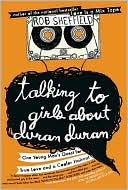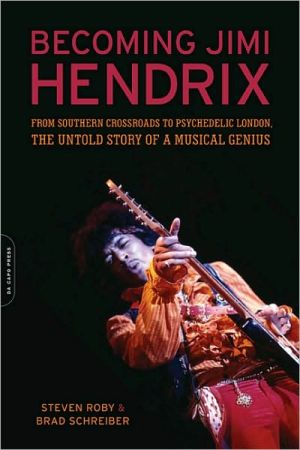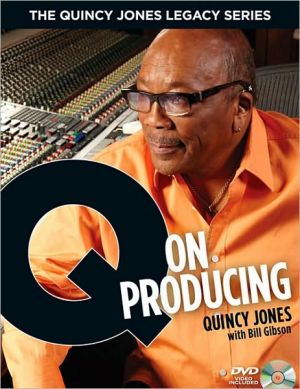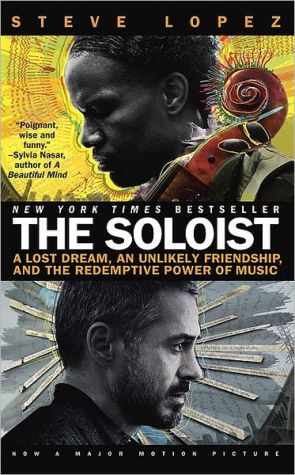Bill Evans: How My Heart Sings
Universally acknowledged as one of the most influential of all jazz pianists, Bill Evans (1929-1980) brought an unequaled finesse of touch to the keyboard. Classically trained on flute, violin, and piano, Evans chose jazz--specifically, the jazz piano trio--as the medium for his life's achievement. Peter Pettinger's enthralling biography tells Evans's story for the first time. Based on extensive research and conversations with many of Evans's friends and colleagues, as well as Pettinger's...
Search in google:
Though he was classically trained on flute, violin, and piano, it was jazz that captured Bill Evans's imagination and fired his musical passion. Widely acknowledged as one of the most influential jazz pianists who ever lived, Evans was fiercely loyal to the piano trio as his medium (although he also worked with such giants as Miles Davis and Art Farmer). Though he garnered his share of accolades (he received several Grammy awards and even more nominations), Evans's career suffered to a certain extent from his lengthy battle with substance abuse. In his insightful look at the pianist's life and career, Bill Evans: How My Heart Sings, concert pianist Peter Pettinger describes the life, the music-making, and the legacy of this musical giant. New York Times Book Review - Terry Teachout [The] book is packed with so much shrewd critical commentary that it reads at times more like an annotated discography than a biography. . . .contains more than enough horror stories to make the reader wonder how he managed to. . .forge a powerfully individual style that would leave its mark on virtually every jazz pianist to follow him.
PrefaceixPrologue1Part I.Birth of the Sound, 1929-581.The Kid from Plainfield92.Swing Pianist203.New Jazz Conceptions314.Sideman39Part II.The First Trio, 1958-615.A Call from Miles516.Everybody Digs Bill Evans657.Miles Calls Back748.Portrait in Jazz869.Explorations9710.Sunday at the Village Vanguard107Part III.On the Road, 1961-7711.Moonbeams11912.Conversations with Myself13113.An American in Europe14514.A Simple Matter of Conviction16715.Quiet Now18216.Living Time19817.You've Been a Fine Audience21318.You Must Believe in Spring227Part IV.The Last Trio, 1977-8019.Reflections in D24920.Twenty-One Cities in Twenty-Four Days26021.Letter to Evan273Notes287Discography295Index337
\ From Barnes & NobleThough he was classically trained on flute, violin, and piano, it was jazz that captured Bill Evans's imagination and fired his musical passion. Widely acknowledged as one of the most influential jazz pianists who ever lived, Evans was fiercely loyal to the piano trio as his medium (although he also worked with such giants as Miles Davis and Art Farmer). Though Evans garnered his share of accolades (he received several Grammy Awards and even more nominations), his career suffered to a certain extent from his lengthy battle with substance abuse. In his insightful look at the pianist's life and career, Bill Evans: How My Heart Sings, concert pianist Peter Pettinger describes the life, the music-making, and the legacy of this musical giant.\ \ \ \ \ Bob BlumenthalThis is an ideal companion for those who want to 'understand' Evans in the most important way, through listening. -- Boston Globe\ \ \ Terry Teachout[The] book is packed with so much shrewd critical commentary that it reads at times more like an annotated discography than a biography. . . .contains more than enough horror stories to make the reader wonder how he managed to. . .forge a powerfully individual style that would leave its mark on virtually every jazz pianist to follow him. \ —New York Times Book Review\ \ \ \ \ Publishers WeeklyIf anyone deserves a good, accessible jazz biography, it's Bill Evans, the classically trained pianist who bridged the gap between bop and cool jazz and influenced a generation of ivory ticklers. Evans left an indelible stamp on the history of jazz piano, and as a white man in a world populated mostly by black musicians, he merits special consideration. Unfortunately, Pettinger's dessicated analytical biography doesn't do justice to Evan's tumultuous, often brilliant life. The main problem here is that the author, himself an internationally renowned British concert pianist, is more interested in the piano player than in the man. After hitting some of the standard biographical notes (Evans was born in Plainfield, N.J., in 1929; talent for the piano appeared early), Pettinger dispenses with personal insights to such a degree that his book becomes more critical discography than biography. Intimates of Evans aren't described physically or characterized emotionally but are simply wrung dry of their musical content then pushed offstage. Interviews with contemporaries do provide memories of Evans, but they are often banal. In relating a life filled with romantic disappointment, extreme drug abuse and assorted illnesses that contributed to his early death in 1980, Pettinger paints only a pallid portrait of the man behind the music. Yet Pettinger is eminently qualified to assay Evan's evolution as a pianist, and students of Evans's music will no doubt enjoy the author's references to Evans's scores and academic excursions: e.g., "These four-note scale groups move down in thirds (a typical feature of the pianist's right-hand style) and they go five times into each half of the middle eight." In the end, though, fans of Evans's music may be left cold. 40 b&w photos. (Sept.)\ \ \ \ \ Library JournalPettinger, a concert pianist, offers a sympathetic biography of the seminal jazz pianist/composer Bill Evans (1929-80). Pettinger carefully explains the pianist's merging of classical structure with jazz improvisation for a distinctively understated, lyrical sound. Using secondary sources and material from a handful of interviews, Pettinger describes Evans's emergence as a fledging sideman in New York, his first album as a leader, and his contributions to modal jazz during stints with Miles Davis. Pettinger devotes the last half of the book to the quintessential Evans trio (with drummer Paul Motian and bassist Scott LaFaro), Evans's battles with heroin and cocaine, and his gigs and recording sessions with dozens of jazz luminaries until his premature death. Though seldom linking Evans with the larger social context in which jazz became popular during the 1950s and 1960s, Pettinger provides a portrait of Evans that will serve as a foundation for further investigation of this quiet jazz giant. Recommended for jazz fans and music buffs.--David P. Szatmary, Univ. of Washington, Seattle\ \ \ \ \ Adam Bresnick. . .[T]he Evans style appealed immediately to intellect and heart alike. . . .for all his enthusiasm and musical knowledge, Mr. Pettinger has produced a curiously flat book. . . .This is a shame. . .[Evans' life] would seem to offer ample material for a penetrating psychological portrait. . . .Mr. Pettinger's desire to particularize the legacy of Bill Evans leads him to construct an aesthetic vacuum around the pianist. . . -- The Wall Street Journal\ \ \ \ \ Terry Teachout[The] book is packed with so much shrewd critical commentary that it reads at times more like an annotated discography than a biography. . . .contains more than enough horror stories to make the reader wonder how he managed to. . .forge a powerfully individual style that would leave its mark on virtually every jazz pianist to follow him. -- The New York Times Book Review\ \ \ \ \ Terry Teachout[A] fine new biography ... packed with... shrewd critical commentary. \ — New York Times Book Review\ \








